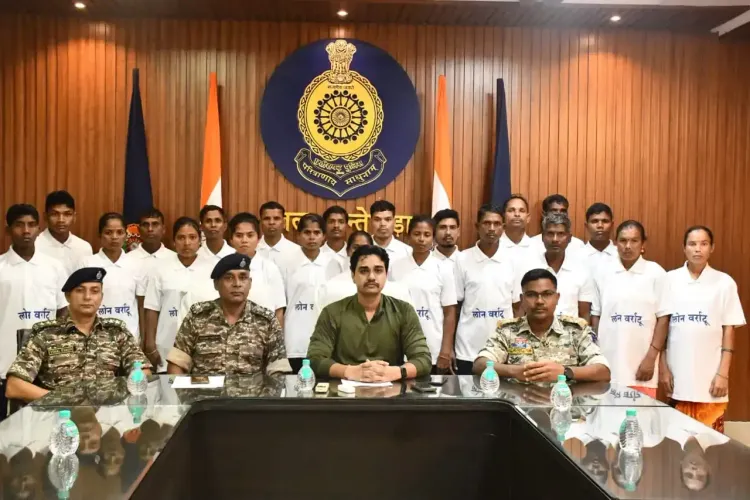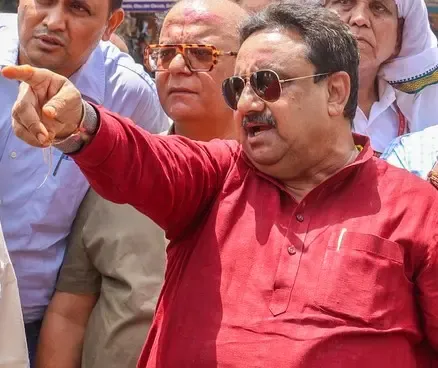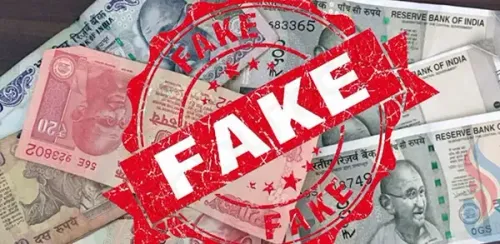Did 21 Maoists Surrender in Dantewada, Strengthening Chhattisgarh’s Anti-Naxal Efforts?

Synopsis
Key Takeaways
- 21 Maoists surrendered in Dantewada, including 13 with cash rewards.
- Key campaigns like Puna Margam and Lon Varratu are crucial for reintegration.
- Surrender reflects disillusionment with Maoist ideology.
- Each surrendered Maoist receives Rs 50,000 and access to benefits.
- Over 1,042 Maoists have surrendered under the Lon Varratu campaign.
Dantewada, August 20 (NationPress) In a remarkable advancement for Chhattisgarh's anti-Naxal initiatives, 21 Maoists, including 13 individuals with cash rewards totaling Rs 25.5 lakh, voluntarily surrendered to security forces in Dantewada district on Wednesday.
The surrender was part of the state’s prominent campaigns -- “Puna Margam (Revival through Rehabilitation)” and “Lon Varratu (Come Back Home)” -- designed to help reintegrate misguided youth into society.
Among those who surrendered was Keye alias Kesha Lekam, a member of company No. one with an Rs 8 lakh bounty, who previously engaged in a deadly encounter with police in the Parasbeda forest earlier this year.
Noteworthy female Maoists Somey alias Jamli Kuhram and Kumari Hidme alias Vijjo Oyam, each with Rs one lakh rewards, also surrendered. They had participated in numerous armed confrontations in the Pidia, Todka, and Korcholi forests between 2023 and 2025.
The other surrendered Maoists were involved in activities such as road sabotage and propaganda during Naxalite bandh weeks, with their choice to surrender stemming from disillusionment with the Maoist ideology, internal conflicts, and the harsh realities of life in the forest.
Many expressed a strong desire to live peacefully and contribute positively to society.
They surrendered at the Superintendent of Police Office in Dantewada, in the presence of DIG (Deputy Inspector General) Dantewada Range Kamalochan Kashyap, DIG CRPF Rakesh Chaudhary, SP Dantewada Gaurav Rai, and CRPF Commandants from the 111th, 230th, and 231st Battalions.
The District Reserve Guard, Bastar Fighters, Special Intelligence Branch, and CRPF (Central Reserve Police Force) units played a vital role in this successful surrender.
In accordance with the Chhattisgarh government’s rehabilitation policy, each surrendered Maoist will receive Rs 50,000 in immediate assistance, alongside access to vocational training, agricultural land, and additional reintegration benefits.
Officials underscored that the success of this campaign lies in its dual strategy -- combining ongoing security operations with community outreach and psychological support.
Over the past 18 months, Dantewada district has seen a consistent flow of Maoist cadres renouncing violence and embracing the democratic process, propelled by the collaborative surrender and rehabilitation efforts of the Government of India and the Government of Chhattisgarh.
Among those who laid down their arms were 99 reward-listed Maoists, part of a larger group of over 390 individuals who opted to break ties with the insurgency, including both senior leaders and grassroots operatives entrenched in base areas.
This momentum persists under the Lon Varratu campaign, which has thus far facilitated the surrender of 1,042 Maoists, including 267 with declared bounties. This figure consists of 837 male and 205 female cadres, not only from Dantewada but also neighboring districts like Bastar, Bijapur, and Narayanpur -- marking a substantial shift in the region’s security dynamics and the rising appeal of reintegration over rebellion.









